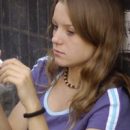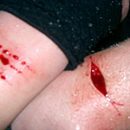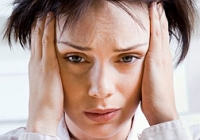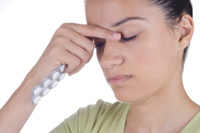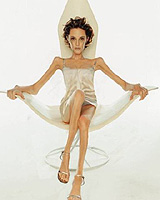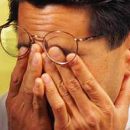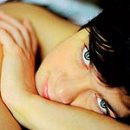Finally make sure that special tests are helped by narcolepsy man or any other sleep disorder. One of them - polysomnography - control over the night bed. It allows you to see various violations. Read more about the study, read in the article.
Content
The essence of polysomnography
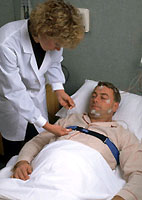 Polysomnography is a study of night sleep. In the course of the study during your sleep, brainwaves are recorded, heart activities and breathing. In addition, the movements of the eyes and movement of the limbs are recorded, as well as muscle tension in the chin area. Sensors are attached to the scalp, face, chest and legs. Sensors transmit small electrical signals into a computer in amplitude.
Polysomnography is a study of night sleep. In the course of the study during your sleep, brainwaves are recorded, heart activities and breathing. In addition, the movements of the eyes and movement of the limbs are recorded, as well as muscle tension in the chin area. Sensors are attached to the scalp, face, chest and legs. Sensors transmit small electrical signals into a computer in amplitude.
These signals make it possible to determine when you sleep or awake overnight. Sensors of the brainwave and eye movements will show, the code you will have a quick sleep phase, during which a dream is usually available. Breathing sensors allow you to see how many times during sleep you have a breath stops. They also allow you to reveal the reduction of airflow and minimal changes in blood saturation level by oxygen.
Sensors fixed on the legs allow you to identify both minimal muscle twitching and pronounced legs arising overnight. Sensor «pin» will go to your finger to register changes in blood saturation level by oxygen. Sensor controls the color of your blood. When the oxygen content is reduced in the blood, the color varies from bright red to dark red.
This study is very important for examination of patients with suspicions of narcolepsy, because they often change and night sleep. Typically, polysomnography is combined with the MTLS test (multiple latency test to sleep), controlling the attacks of drowsiness during the day.
Doctors working in the center of sleep disorders will make a maximum effort, so that you feel the most free and relaxed. You will be offered to arrive at the center in the evening. You will be given some time to adapt in the room where you will sleep. Other patients in this room will not be.
During a polysomnographic study, you will not experience any unpleasant sensations, since all sensors are fixed carefully, and the long wires are not constrained by movements. Before studying, you will be asked to perform certain actions to verify the quality of the operation of the sensors.
Before the time you have familiar to sleep, you can read or watch TV. When you decide that the time has come to sleep, the technologist will turn off the light in the room. The camcorder operating under conditions of low lighting will allow the technologist located in the next room to see you. If any of the sensors breaks off during sleep, a technologist will go to your room and secure the sensor. Technologist also disconnects drive from you if you need to go night to the toilet.
No need to be afraid to fail test. Almost any person falls asleep during the study. Most people celebrate that they sleep a little worse than at home. It will not affect the results. In most cases, there is no need to sleep all 8 hours, in order to determine the causes of problems with sleep.
In the morning the operation of the sensors will be checked again, after which the sensors will be removed. The study will be completed and you can go home. If you slept worse than usual during the study, you can feel a little fatigue. In any case, you can return to the usual schedule of life a day after the study.
An assessment of the results of the study is carried out by a technologist and attending physician. They compare the results of several tests that allow you to identify sleep disorders with your complaints and analyzes data. This allows you to correctly diagnose.

